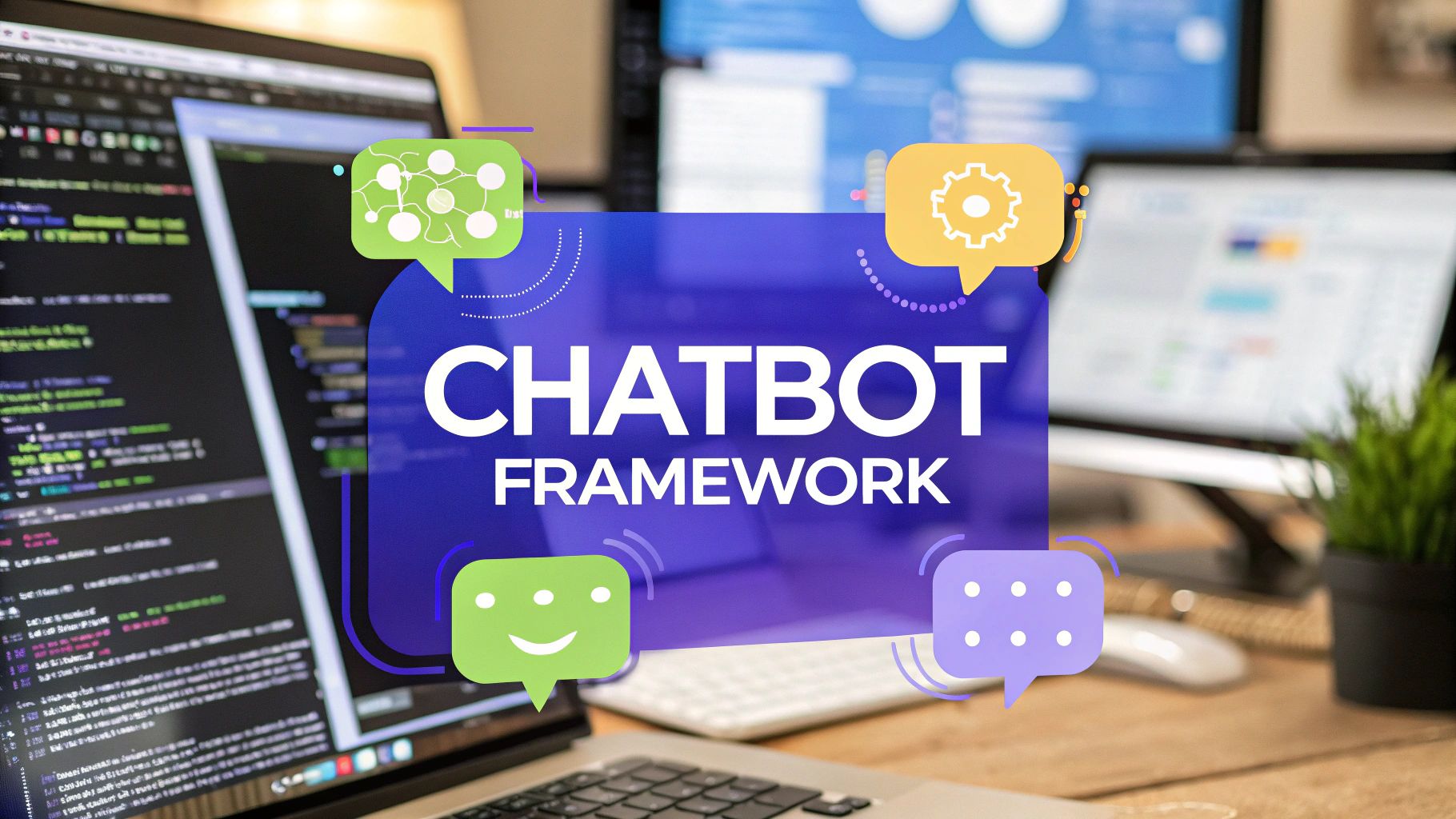How to Create AI Agents for Your Business
Want to learn how to create AI agents? This guide provides a practical walkthrough for building, training, and deploying smart agents that solve real problems.
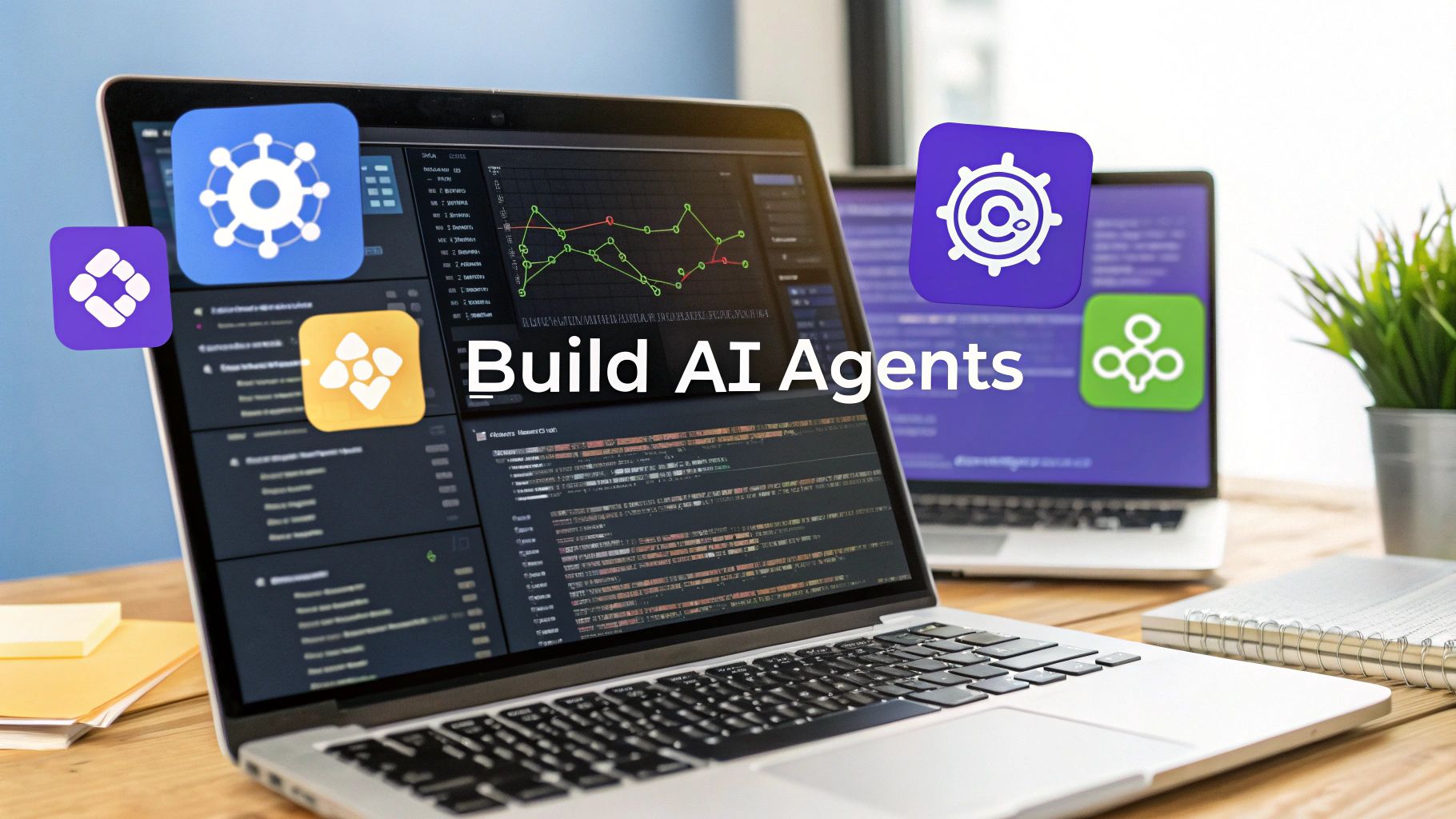
Thinking about building your own AI agents? It's more doable than you might think. Modern platforms make it possible for anyone to build specialized AI assistants that can tackle specific jobs, from digging up data to handling customer support, often with no coding required.
What Exactly Is an AI Agent
So, what is an AI agent? Let's push the sci-fi imagery aside for a second.
Think of an AI agent as a smart assistant built for a specific mission. It goes beyond a simple chatbot that just answers questions; an agent can actually take action to get something done.

This idea isn't new. The concept has been around since the mid-20th century, with the groundwork really starting in the 1950s. Of course, those early systems were simple rule-based programs, a far cry from the dynamic agents we have today.
Every AI agent you build will have a few key components working together. Knowing these pieces is the first real step to building your own.
The Core Components of an AI agent
An effective AI agent has three fundamental parts you will work with.
The Model (The Brain): This is the large language model (LLM) like GPT-4 that handles all the reasoning and language. It acts as the agent's central processor, figuring out what a user wants and deciding what to do next.
The Knowledge (The Memory): An agent is only as good as the information it can access. You provide this by uploading documents, connecting it to your website, or linking it to databases. This gives the agent the specific context it needs to do its job well.
The Tools (The Hands): This is what separates an agent from a simple bot. Tools are functions that let the agent interact with other systems. Think searching the web, using a calculator, or connecting to your company’s API to pull up customer data.
These three elements create a system that can understand what a user is asking for, find the right information, and take real steps to solve a problem. You can find more on their capabilities in our article on agents in AI.
If you want a great overview of the whole process from idea to launch, this practical guide on how to build an AI app is a fantastic resource.
Defining a Clear Purpose for Your agent
Before you write a single instruction, you need a plan. What, exactly, is this AI agent going to solve? A fuzzy goal like "improving customer service" is a recipe for building something that sounds neat but does not do anything useful.
You have to get specific. A much better goal is to "cut customer support ticket response times by 50% by instantly answering common account questions." Now that's a target you can build for and measure against. Or maybe you want to "automate initial sales lead qualification by asking three key questions and scheduling a demo if they qualify."
This kind of detail separates a helpful agent from another frustrating gadget. Honestly, this planning stage is the most important part of the whole process. If you are looking for ideas, it can be helpful to review various AI agent use cases to see what is possible and get some inspiration.
The whole process boils down to three simple questions: Who are you building for? What do they need? And how will you know if you have succeeded?
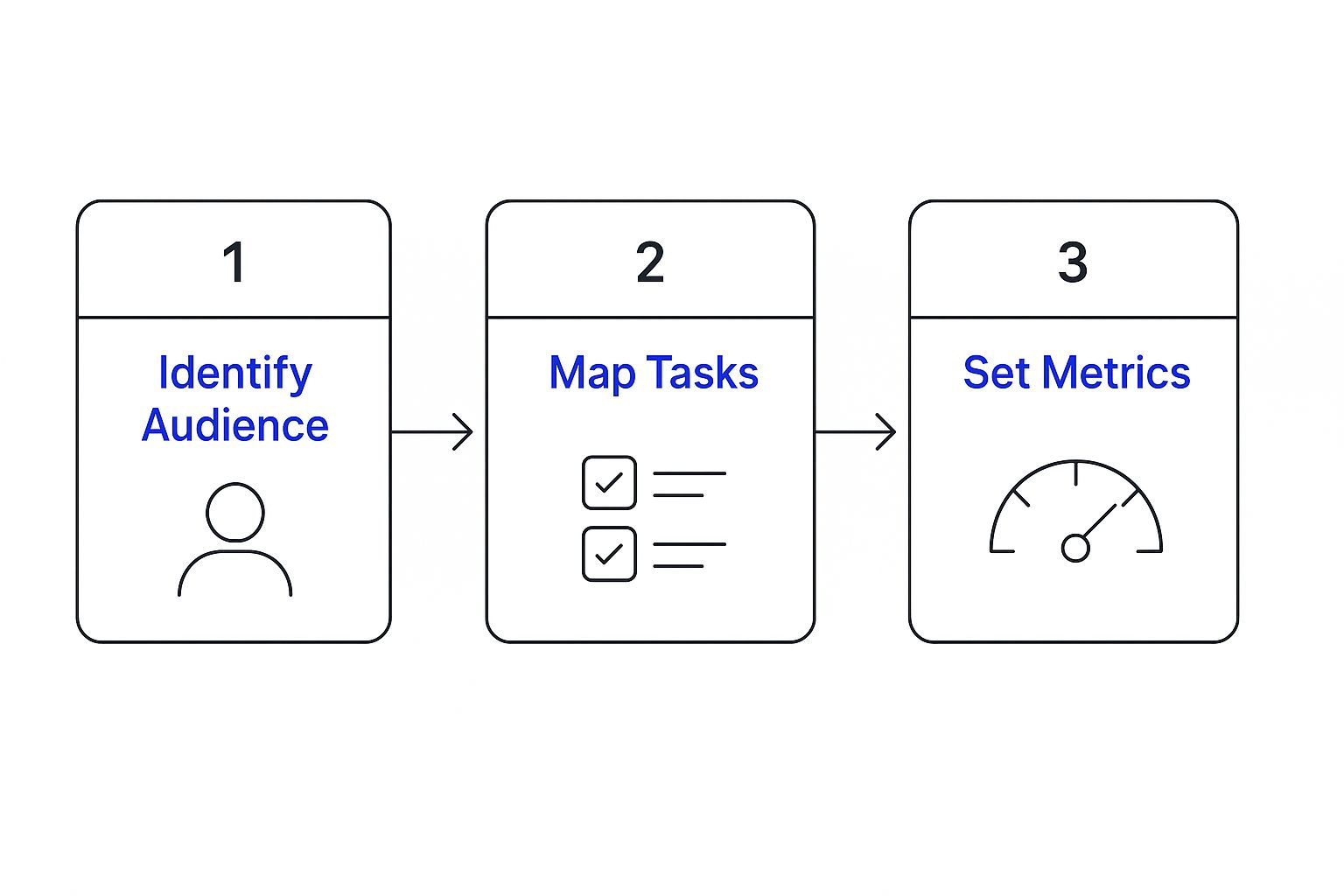
This workflow is your roadmap. It takes you from knowing your audience to mapping out their problems and, finally, setting the metrics that prove your agent is delivering real value.
Identify Your Audience and Their Pains
First things first: who is going to use this thing? Is it for your customers? Your sales team? Your operations staff? Each group has completely different needs and expectations.
A customer-facing agent, for instance, needs a friendly and patient tone. An internal agent built for your sales reps can be more direct and data-driven. Getting inside the user's head is the only way to build something they will actually want to use.
Think about their biggest headaches.
- Are customers stuck waiting hours for simple answers?
- Is your sales team burning daylight chasing down unqualified leads?
- Does your ops team spend half their day on mind-numbing data entry?
Zero in on a single, high-impact problem. Your goal is to build an agent that solves a real-world annoyance and saves people time, money, or a whole lot of frustration.
Map Out the agent's Exact Tasks
Once you have a clear problem in your sights, you need to map out the precise actions the agent will perform. Do not just think about what it will say; think about what it will do. What does a successful interaction look like from start to finish?
Key Takeaway: An agent's value comes from its ability to get things done, not just chat. You need to define its purpose as a sequence of actions, like looking up an order, checking a knowledge base, or scheduling a meeting.
For an e-commerce support agent, the task flow might be as simple as this:
- Greet the customer and ask for their order number.
- Use a tool to connect to the store’s database and grab the order status.
- Clearly communicate the status, like "shipped," "in transit," or "delivered."
- Ask if the customer needs help with anything else.
This workflow is straightforward, actionable, and solves a common problem head-on. Writing out these steps gives your agent a defined scope and prevents it from getting lost or going off-script.
Building Your First Agent in Chatiant
Alright, you’ve got your plan. Now for the fun part: bringing your AI agent to life. Platforms like Chatiant are designed for this, letting you skip the code and jump straight into defining what your agent does and how it behaves.
First things first, you will create a new agent, give it a name, and start shaping its core persona. This is where your strategy starts turning into a real, functional assistant.
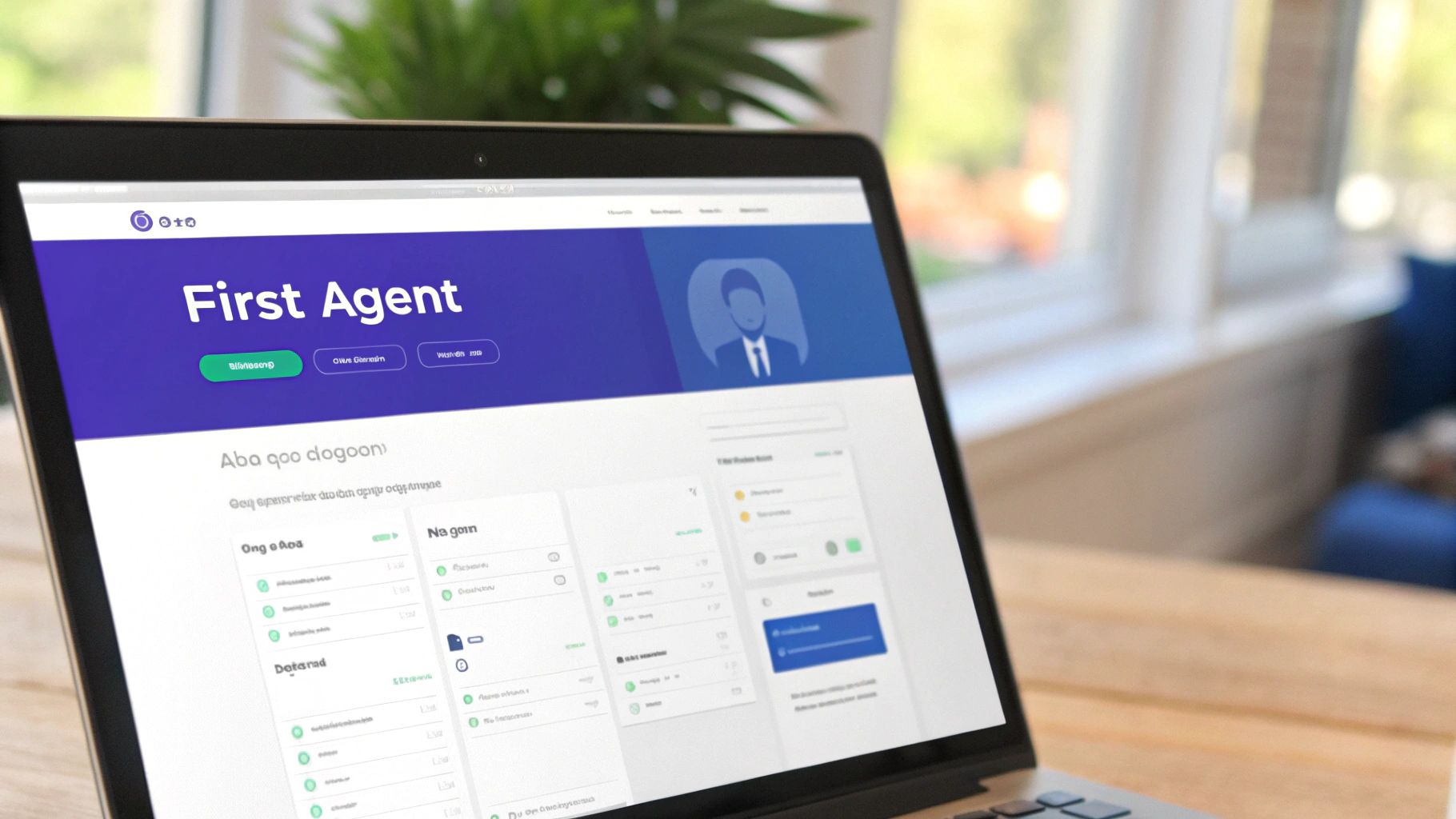
This initial setup screen is your command center. It’s intentionally straightforward, so you can lock in the key parameters that will guide your agent’s behavior from its very first interaction.
Choosing the Right Brain for Your agent
Next up, you’ll connect your agent's "brain," its large language model (LLM). This is a big decision because different models have different superpowers. For example, GPT-4 is a beast for complex reasoning, making it perfect for agents that need to solve tricky problems. A model like Claude 3 Sonnet might strike a better balance between performance and cost, especially for high-volume customer service bots.
So, how do you pick? It comes down to a few key things:
- Task Complexity: Does your agent need to handle nuance and complicated user requests, or is it mostly handling simple Q&As? More advanced models are better at subtlety.
- Speed: For live chat, every millisecond counts. Some models are optimized for near-instant responses, which is a must for a good user experience.
- Cost: LLMs are usually billed per token (which are like pieces of words). Your budget will be a major factor in determining which model is sustainable for your expected traffic.
There's no single "best" model; it all depends on the job you need your agent to do.
To help you decide, here’s a quick comparison of some popular options you might find on a platform like Chatiant.
Choosing the Right LLM for Your Agent
This table breaks down a few popular Large Language Models to help you match a model to your agent's specific needs.
The best choice is the one that aligns with your agent's purpose, your users' expectations, and your budget. Do not be afraid to test a couple of different models to see which one delivers the best results for your specific use case.
Crafting the Initial Prompt
With an LLM selected, it’s time to configure the initial prompt. This is your agent's constitution. It defines its personality, its rules of engagement, and its core directive. Think of it as the super-detailed job description you’d hand to a new hire on their first day.
For a customer support agent, the prompt is everything. You might include lines like this:
"You are a friendly and helpful support assistant for 'Gadget Masters.' Your tone should always be patient and professional. You must never offer opinions on competitor products. Your main goal is to help users track their orders and understand our return policy."
This directive sets crystal-clear boundaries and objectives. A sharp, well-written prompt is the bedrock of a reliable AI agent because it minimizes the chances of weird, off-brand responses and keeps the agent locked on its mission. If you want to go deeper, check out our guide on how to build an AI agent with Chatiant.
This whole process shows how far AI has come. We have moved from rigid, rule-based systems to these incredibly flexible, data-driven agents. A major turning point was back in 1997 when IBM's Deep Blue beat chess champion Garry Kasparov, proving the power of this new approach. That same year, commercially available speech recognition landed in Windows, bringing AI into our daily lives and paving the way for the sophisticated agents we build today. For more on this, you can explore the history of AI agents and machine learning.
Giving Your Agent Knowledge and Tools
An AI agent with a powerful brain but no information is like a brilliant detective locked in an empty room. To make it genuinely useful, you need to give it two things: a solid base of knowledge to draw from and a set of tools to interact with the world. This is what separates a true AI agent from a basic chatbot.
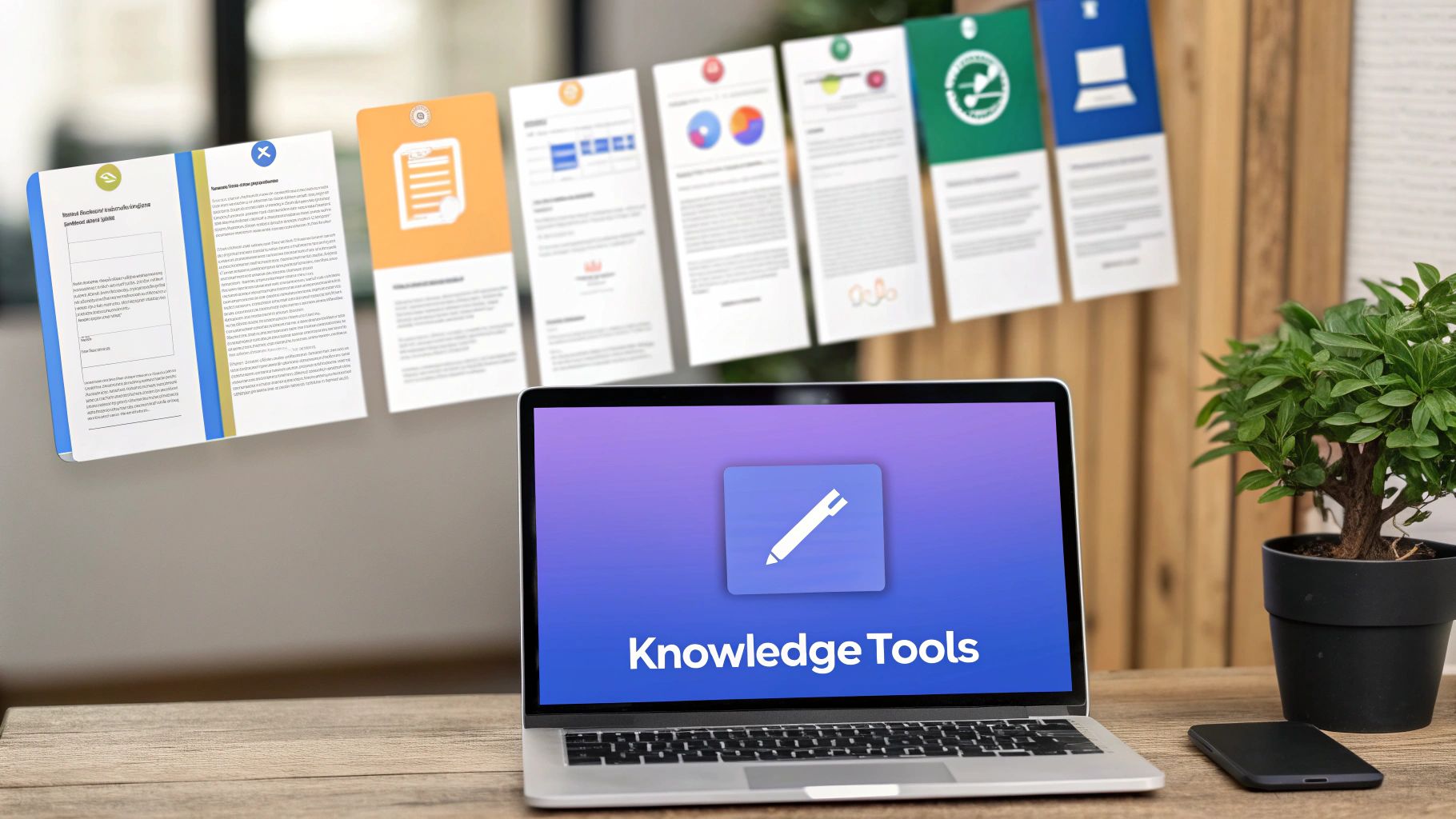
This is the stage where your agent’s real-world value starts to take shape. You are building its specialized library and teaching it practical, job-specific skills.
Building Your Agent's Knowledge Base
Think of your agent’s knowledge base as its single source of truth. It is the curated information it relies on to answer questions accurately and consistently, and the quality of that information directly impacts the quality of your agent's responses.
Inside a platform like Chatiant, you have a few straightforward ways to build this out:
- Uploading Documents: This is perfect for internal information. You can upload PDFs of product manuals, HR policies, or company FAQs. The agent will learn this content inside and out.
- Connecting to Websites: You can also point your agent to specific web pages or even entire websites. For a customer support agent, linking it to your help center is an obvious and powerful first step.
- Connecting to Data Sources: For more dynamic information, you can link to other sources, like a live product catalog or an internal company wiki that is constantly being updated.
This method of grounding an agent with specific, private data is a core part of a technique known as Retrieval-Augmented Generation. To get a better handle on the specifics, check out our detailed guide on what is RAG.
Pro Tip: Do not just dump everything you have into the knowledge base. Be a curator. A smaller, well-organized set of high-quality documents will produce much better results than a massive, messy data dump. Always keep it relevant to the agent's defined purpose.
Giving Your Agent Tools to Take Action
Knowledge is important for answering questions, but tools are what let your agent actually get things done. A tool is just a specific function that lets your agent interact with external systems to perform an action. This is the "agent" part of the AI agent.
For instance, a sales agent could be given tools to:
- Search the Web: To find fresh information about a prospect's company right before a call.
- Use a Calculator: To quickly figure out pricing with specific discounts for a potential customer.
- Connect to a CRM API: To look up a lead's contact history or create a new entry in your system on the fly.
Setting these up in a platform like Chatiant is usually just a matter of enabling the tool and plugging in any necessary credentials, like an API key. You are basically giving your agent superpowers that extend its capabilities far beyond what it already knows.
Without tools, you just have a very knowledgeable chatbot. With tools, you have an active participant in your workflows.
How to Test Deploy and Improve Your Agent
Building your agent is the first big step, but the work is not over yet. Now it is time to make sure it actually works as intended and gets smarter over time.
This cycle of testing, deploying, and improving is what turns a basic agent into a reliable, high-performing asset for your business. It’s a common mistake to ask your agent a few simple questions and call it a day. Proper testing is more methodical. It means thinking like your users and even anticipating the weird, unexpected questions they are bound to ask.
Creating Robust Test Scenarios
A solid testing plan needs to cover both the obvious and the obscure. The goal is to build a library of test cases that push your agent to its limits, making sure it responds correctly under all sorts of conditions.
Start by scripting out the most common interactions. If you’re building a customer support agent, this would include standard questions like "Where is my order?" or "How do I process a return?" Run these tests repeatedly to make sure the agent is consistent and accurate.
Next, it’s time to test for edge cases. These are the unusual or tricky situations that can easily trip up an AI.
- Ambiguous Questions: Ask things that could be interpreted in multiple ways, like, "What about my last order?" See if the agent knows how to ask for clarification.
- Irrelevant Topics: See how it handles queries that are completely outside its knowledge base. A well-instructed agent should politely state it can’t help with that topic instead of making something up.
- Complex Scenarios: Combine multiple requests into a single query. For example, "Can you track my order and also tell me your holiday hours?"
By running through these scenarios, you can uncover weaknesses in your agent's instructions or knowledge base long before your customers do.
Deploying Your agent
Once you’re happy with your testing, it’s time to get your agent out into the world. With a platform like Chatiant, this part is usually pretty straightforward. You’ll have a few different ways to deploy it, depending on where your users spend their time.
You can embed the agent directly onto your website with a simple snippet of code, turning it into a 24/7 support channel. Another popular option is integrating it with communication platforms like Slack or Discord, making it an internal assistant for your team.
The key is to meet your users where they already are. This makes the agent accessible and encourages people to actually use it, whether it’s helping customers on your site or automating tasks for your staff.
Monitoring and Continuous Improvement
Launching your agent is not the finish line. The real learning begins once it starts interacting with real people. This is where you’ll gather invaluable feedback to make your agent even better.
Make it a habit to monitor the agent's conversations. Look for patterns in user questions and pinpoint any interactions where the agent struggled or gave a wrong answer. This analysis gives you a clear roadmap for improvements.
Use this feedback to refine the agent’s instructions, update its knowledge base with new information, and even add new tools to expand its capabilities. This iterative process is how you create AI agents that solve problems today and adapt to your business as it grows.
Common Questions About Creating AI Agents
As you start digging into how to create an AI agent, a few questions always seem to come up first. People naturally wonder about the technical side of things, what the costs look like, and how these agents are really different from the chatbots they're used to.
Let's clear up some of the most common ones.
Do I Need Coding Skills to Create an AI Agent?
Not anymore. While building AI used to be a job strictly for developers, modern no-code platforms like Chatiant have completely changed the game. These tools let you build, configure, and launch powerful agents using a simple visual interface.
Instead of writing code, your focus shifts to more strategic work:
- Defining a crystal-clear goal for your agent.
- Giving it high-quality, relevant knowledge to draw from.
- Hooking it up to the tools it needs to perform actions.
This change opens up AI creation to a much wider audience like business users, marketers, and customer support specialists who know the problems that need solving.
How Much Does It Cost to Build and Run an AI Agent?
The cost really boils down to a few key things: the platform you choose, how complex your agent is, and how much it gets used. Most platforms have a subscription fee, but the main ongoing cost is for LLM usage.
This is typically billed based on the number of tokens (think of them as pieces of words) the model processes.
A simple agent handling moderate traffic can be surprisingly affordable. A more complex agent that uses lots of tools and sees heavy traffic will naturally cost more. It is smart to monitor usage closely from the start and pick an LLM that gives you the right balance of performance and cost.
What Is the Difference Between a Chatbot and an AI Agent?
This is a big one, and it is a key distinction. A traditional chatbot is designed to follow a script or a basic set of rules. It’s great for answering simple, repetitive questions from a fixed knowledge base, but it can’t perform actions or think outside its programming.
An AI agent is a whole different animal.
An AI agent understands complex requests, uses external tools like web search or APIs, and can execute multi-step tasks to achieve a goal. To put it simply, a chatbot answers questions; an AI agent gets things done.
How Can I Make Sure My AI Agent Gives Accurate Responses?
Accuracy is everything, and it comes down to a few core practices. First, you have to feed it a high-quality, curated knowledge base; the agent’s answers will only ever be as good as the information it has access to.
Second, you need to write very specific and clear instructions in its main prompt. This is where you define its behavior, tone, and what it should not do. You can even tell it to avoid certain topics or refuse to answer questions it's not equipped for.
Finally, consistent testing and monitoring are non-negotiable. Reviewing its conversations will help you spot and fix any issues by refining its instructions or updating its knowledge base. It is an ongoing process of improvement.
Ready to build an agent that actually gets things done? Chatiant provides a powerful, no-code platform to create, deploy, and manage AI agents for your business needs. Start building your first agent today!


